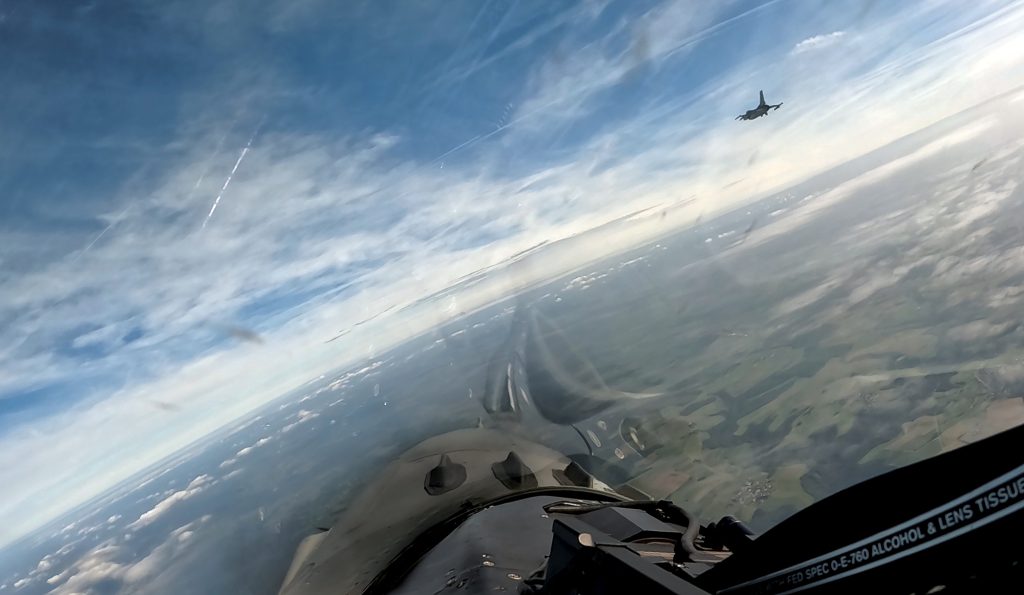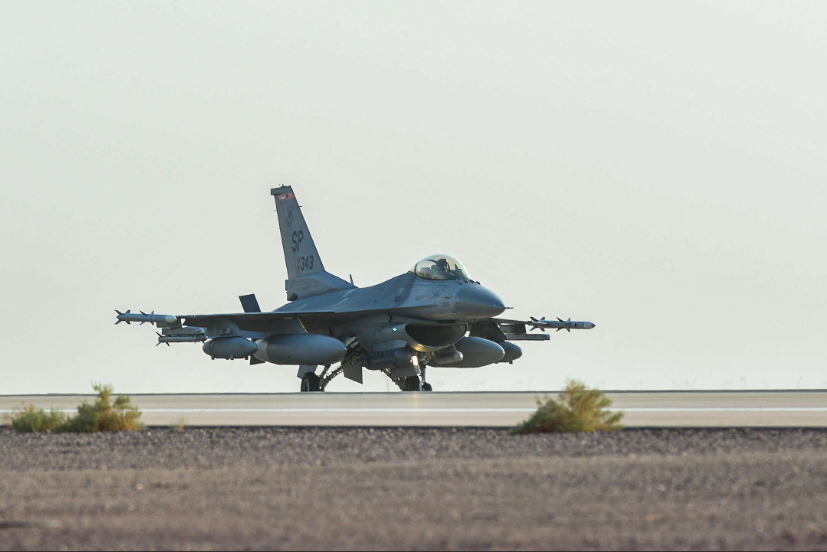As tensions spiral in the Middle East, U.S. Air Force F-16 Fighting Falcons from Germany have flown to the region, U.S. Central Command said Oct. 25.
The F-16s are from the 480th Fighter Squadron at Spangdahlem Air Base, Germany, and represent some of the service’s most advanced models.
They arrived just a little before Israeli aircraft attacked Iran on Oct. 26 in retaliation for Tehran’s ballistic missile attack on Israel on Oct. 1. The U.S. is hoping the fighting between Israel and Iran will end at this point and has warned Iran against escalating the confrontation.
Secretary of Defense Lloyd J. Austin III told his Israeli counterpart, Yoav Gallant, that day that “the United States is well-postured to defend U.S. forces, facilities, and partners across the region” and that “Iran should not make the mistake of responding to Israel’s strikes, which should mark the end of this exchange,” according to a Pentagon readout of the call.
The 480th Fighter Squadron has some of the Air Force’s most capable F-16s, the so-called Block 50 jets that specialize in suppressing enemy air defenses. They are replacing the F-16s previously deployed to the Middle East, U.S. officials told Air & Space Forces Magazine. F-16s from the 510th Fighter Squadron, based at Aviano Air Base, Italy, deployed to the region in the spring.
It is unclear whether the previously deployed F-16 unit has departed the region or if the U.S. is temporarily maintaining two F-16 squadrons in the Middle East to boost the airpower in the region, a practice the Air Force has sometimes carried out in the past.
 An image from video shows a cockpit view of an F-16 from the 480th Fighter Squadron, Spangdahlem Air Base, Germany, operating as an opposition force for a counter-air exercise in June 2024. Chris Gordon/staff
An image from video shows a cockpit view of an F-16 from the 480th Fighter Squadron, Spangdahlem Air Base, Germany, operating as an opposition force for a counter-air exercise in June 2024. Chris Gordon/staff
U.S. Air Force F-22 Raptors are also in the region while additional squadrons of F-15 Strike Eagles and A-10 Thunderbolt II attack planes also arrived in the past month. The U.S. has also bolstered its air defense in the region with the deployment of a Terminal High-Altitude Area Defense (THAAD) ballistic missile defense system to Israel.
The Air Force F-16s, F-15E Strike Eagles, and F-22s that have deployed to the Middle East are equipped with active electronically scanned array (AESA) radars. That makes those fighters more capable of taking down drones, such as those launched by Iran, which fly at a low altitude and have a small radar cross-section, a U.S. defense official told Air & Space Forces Magazine.
“We are deploying them … as timely as we can,” Air Force Chief of Staff Gen. David W. Allvin said when asked about the Air Force units sent to the region at the Military Reporters and Editors Conference on Oct. 25. “We certainly intend to fulfill all those as soon as possible.”
